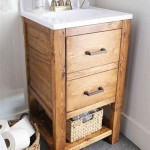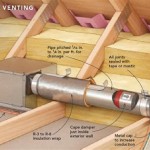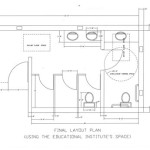How To Replace a Bathroom Floor Drain Cover
A bathroom floor drain cover serves the crucial dual purpose of preventing debris from clogging the drain and providing a safe, level surface within the shower or bathroom floor. Over time, these covers can become worn, damaged, or simply aesthetically outdated. Replacing a bathroom floor drain cover is a relatively straightforward task that most homeowners can accomplish with a few basic tools and a little patience.
Before beginning the replacement process, it is important to identify the type of drain cover currently installed. Common types include push-fit, screw-in, and lift-and-turn. Knowing the existing type will ensure the purchase of a correct and compatible replacement. Measurements are also essential. Measure the diameter of the drain opening, not the existing cover, for an accurate fit. Digital calipers provide the most precise measurement, but a ruler can also suffice. Record these measurements and take them to the hardware store to guarantee the selection of the appropriately sized replacement cover.
Several tools facilitate the drain cover removal and replacement process. These include a screwdriver (Phillips or flathead, depending on the existing cover), pliers, a putty knife, and potentially a drain key tool for removing stubborn covers. Having these tools readily available will streamline the process. Additionally, having a bucket and some old towels on hand is advisable for managing any residual water or debris.
The removal process varies depending on the type of drain cover. For push-fit covers, the process typically involves inserting a screwdriver or putty knife under the edge of the cover and gently prying it upwards. Some push-fit covers may require a slight twisting motion while lifting. Screw-in covers, as their name suggests, are removed by unscrewing the central screw using an appropriately sized screwdriver. Lift-and-turn covers require a specialized drain key, which inserts into slots in the cover and allows for turning and lifting the cover simultaneously. If a drain key isn't available, pliers may sometimes be used to grip and turn the cover.
Once the old cover has been successfully removed, it's an opportune time to clean the drain opening. Hair and soap scum often accumulate around the drain, and removing this debris will improve drainage and prevent future clogs. A small brush, an old toothbrush, or even a bent wire hanger can be effective tools for this cleaning process. Thoroughly rinse the drain with hot water after cleaning.
Installing the new drain cover is generally the reverse of the removal process. For push-fit covers, align the cover with the drain opening and firmly press down until it sits securely. Screw-in covers require aligning the threads and tightening the central screw with a screwdriver. Be careful not to overtighten, as this can damage the cover or the drain. Lift-and-turn covers are installed by aligning the slots with the drain opening, inserting the drain key, and turning to lock the cover in place. Remove the drain key once secure.
Different drain covers have varying installation methods. Some covers may require the application of plumber's putty to create a watertight seal. Plumber's putty is a soft, pliable material that is molded into a rope and placed around the underside of the cover before installation. Other covers may utilize a rubber gasket to create the seal. Consult the manufacturer's instructions included with the new drain cover for specific installation guidelines.
After installing the new cover, run water down the drain to test for leaks. If any leaks are detected, remove the cover and check the seal. Ensure the plumber's putty or gasket is properly positioned and re-install the cover. Retest for leaks. If leaks persist, consult a plumbing professional for further assistance.
Regular maintenance of the drain cover and drain will help prevent clogs and ensure optimal drainage. Periodically remove the cover and clean the drain opening to remove any accumulated debris. Avoid using harsh chemicals, as these can damage the drain and plumbing system. Regular cleaning with hot water and a mild detergent is typically sufficient.
Choosing the right replacement cover involves considering both functionality and aesthetics. Various materials are available, including stainless steel, brass, and plastic. Stainless steel offers durability and corrosion resistance, while brass provides a classic look. Plastic covers are typically the most affordable option. Consider the existing bathroom fixtures and décor when selecting a material and finish to ensure a cohesive design.
While replacing a bathroom floor drain cover is generally a simple task, certain situations may warrant contacting a professional plumber. If the drain is severely clogged or damaged, or if the surrounding flooring requires repair, professional assistance may be necessary. Attempting complex plumbing repairs without proper training and tools can exacerbate the problem and lead to further damage.

Project Replacing The Floor Drain Cover Of Bathroom3

Project Replacing The Floor Drain Cover Of Bathroom3

How To Replace A Floor Drain In The Bathroom Ruhe

Project Replacing Floor Drain Cover Bathroom 1

How To Remove A Shower Drain Homeserve Usa

How To Install Floor Drain Perfect Installation Bathroom Pop Up Cover

How To Replace And Install Floor Drain

How To Remove A Shower Drain Cover

Floor Wastes Site Visit Episode 100

Shower Grate Drain Installation Bathroom Floor Slot Drains
Related Posts







